Disclosure: Meeple Mountain received a free copy of this product in exchange for an honest, unbiased review. This review is not intended to be an endorsement.
I’m a big fan of Alban Viard.
Viard, the designer of Clinic: Deluxe Edition, strikes me as the kind of guy who is probably a mad genius. The rulebook for Clinic made me laugh out loud and it was the somewhat cynical approach to the hospital design simulation that made me fall in love with a super-complex system that was one of the hardest games to table in my collection.
I’ll play anything that Viard designs. With that in mind, I reached out to Clay Ross at Capstone Games to see if I could snag a review copy of the Nano9Games series. Viard built a small-box collection of three solo-only games featuring different themes and a gimmick—each of the three volumes features nine cards, nine dice, and nine cubes in a small bookshelf-style box.
I decided to play the games in order, each time on a different trip I had scheduled for personal travel this fall. Below, I’ll share a few thoughts on each box and an overall verdict!
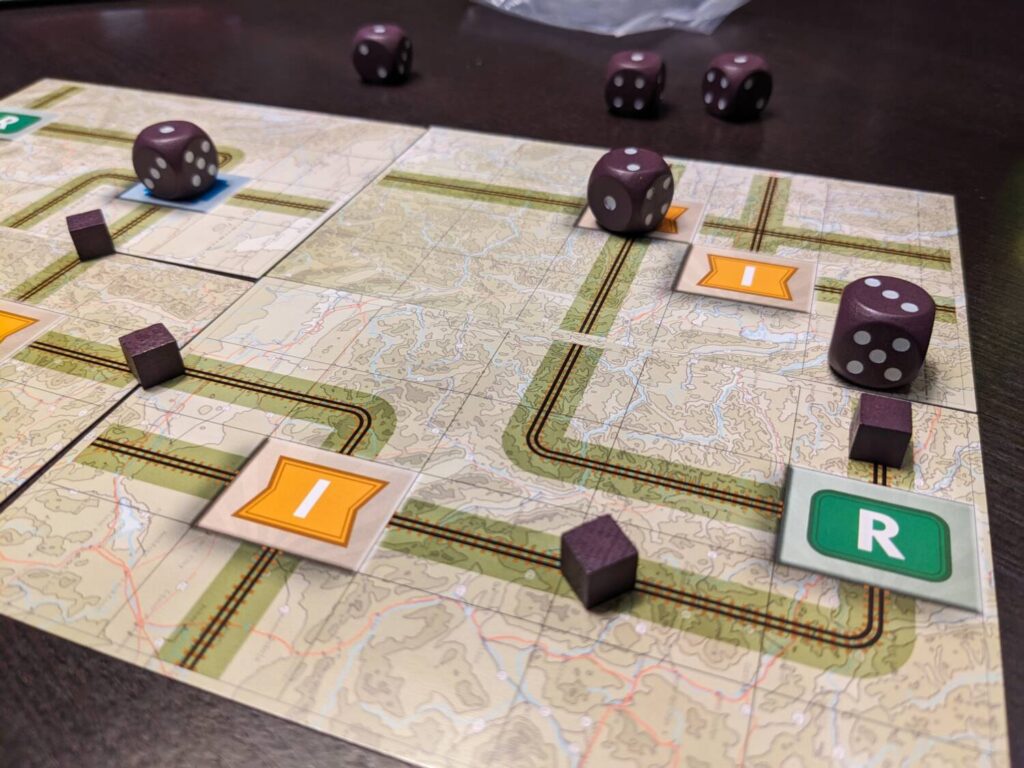
Nano9Games Volume 1: Railways
Railways is a high-score challenge; you are tasked with building an efficient railway network over 120 years (12 rounds, each spanning a decade) to deliver passengers and increase capital and profits.
There are nine cards in Railways. One tracks pollution, capital/revenues, and profit. The other eight are double-sided. One side features various track configurations, with buildings sitting at the end of those tracks. These trigger different scoring bonuses, capital, and gaining additional workers who will be used to build your tracks later in the game.
The other side of the cards list four slots with an action or two in each slot. In each game, four of the cards are built into a 2×2 grid representing your city. The other four are action cards, and on a turn you’ll always start with three of those cards to choose from for your two actions during a decade.
Railways is…OK. I liked the feel of progression as I got to build out a railway network that could deliver big profits in later turns. This was particularly true when I found ways to create routes that maximized profits by spreading out how far passengers had to go to reach their destination. Similar to moving goods in games like Railways of the World or Age of Steam (or like traveling in, you know, real life), revenues are much better the farther passengers have to go.
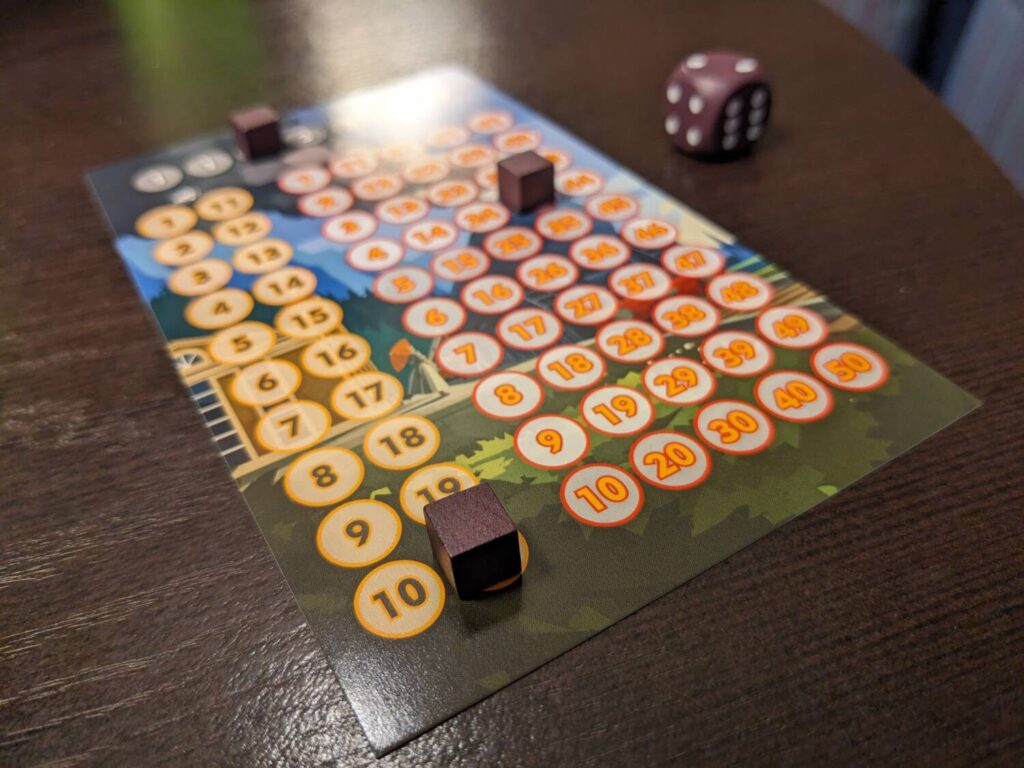
The rules overhead is a little high for a game this straightforward. In a game that only has 24 total actions, it feels like eight different action choices is too many for each turn. That solidifies when you realize that final scores are not listed as a chart at the back of the manual listing what a good or bad score really is. Instead, final scores are calculated by taking profit, adding three profit for each completed rail link, then subtracting pollution. So, I can’t tell if 30 is a great score or if 45 is a bad one.
There are variants listed at the back of the rulebook, but the variants didn’t feel particularly meaningful or interesting. (One is “move all the passengers to their destinations”, which is doable if a player doesn’t build any new buildings during the game. That ends up not being as puzzly as I had hoped!)
My main issue with Railways—I didn’t find myself as intrigued by the randomized puzzle in ways that Clinic offered a unique puzzle. Obviously, Railways is a much lighter experience. Still, I was hoping for Clinic Junior/Clinic Light, and Railways didn’t get me there.
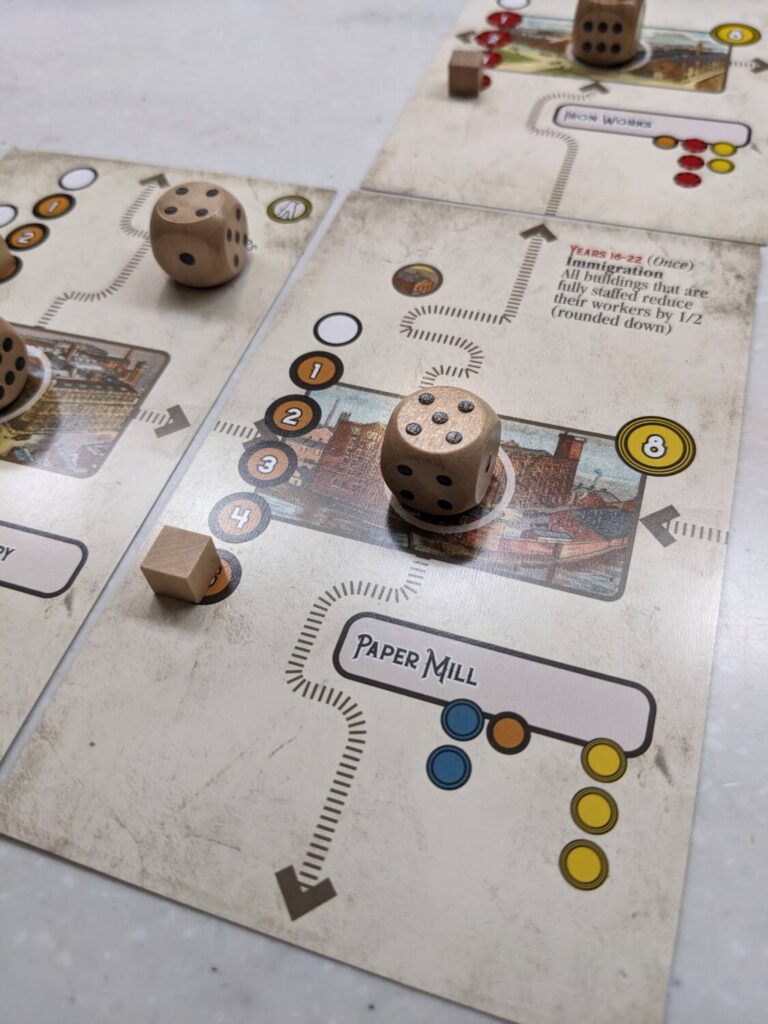
Nano9Games Volume Two: City Planner
City Planner, designed by Todd Sanders and Alban Viard, plays one or two players, but it plays the same way regardless of player count. That makes this the only game in the collection that accommodates a running mate.
Over the course of eight turns, players try to score the most points by rolling six-sided dice and assigning the results to seven slightly different City Block cards. Some spots on the cards score points, others award cash, cash which is used to re-roll die results you don’t like for your city plans. Like the other games in the collection, solo play is graded against a chart that spits out a title based on how well you do. Score 58 points, like I did in my first game? You are a middle-of-the-road “Senior Architect.” Score 20 or less, and you are an “Intern Architect.”
I thought the description on the back of this box fits what the product—and maybe all the games in the Nano9Games collection—is aiming for.
“Plan your city wisely and follow local building codes for commercial buildings, industrial sites, civic services, and residential areas to become the City Planner.”
The reality is this: you roll some dice, you get some points, and you do that eight times. The card layout here is good (although the color scheme for the different buildings isn’t great; the greens, blues and blacks don’t feel that distinct) and the rules are quite clear. There just isn’t much going on.

Nano9Games Volume Three: Empire
Empire, designed by Todd Sanders, has a lot of similarities to Railways; one of the cards is dedicated to tracking score, one is essentially a conversion chart of an ever-changing market thanks to a rolled market die. The remaining double-sided cards are used in Empire to build out a small network of connected buildings that need to be fully staffed with workers to drive production and profit.
This time around, players are tasked with building a manufacturing empire across 30 years (15 turns). Each turn is the same: using a variety of trackers on buildings and the Central Factory card, you can sell resources and capital for profit (points), hire workers in their buildings, erect new building cards, and produce. Any one of those actions on a turn is free; taking more actions costs more capital.
Early in each game, it’s hard to score points because there are no buildings. However, the engine ramps up quickly when buildings are fully staffed because of the way the game tracks resource production. The back half of my games of Empire featured a ton of scoring, and at the end of 15 rounds, players compare their performance against one of the four scoring tiers ranging from “You’re terrible” to “You rule.” (The rule list more glamorous titles.)
Empire was fine. It is so easy to reset the game that I played a few times at my hotel lobby on a work trip to Atlanta. You can get three games in under an hour pretty easily. The puzzle is fine and save for a few minor event actions, there’s not much that needs to be tracked besides the score.
But it led to the same question I asked myself across each of these games: what is their reason to exist?
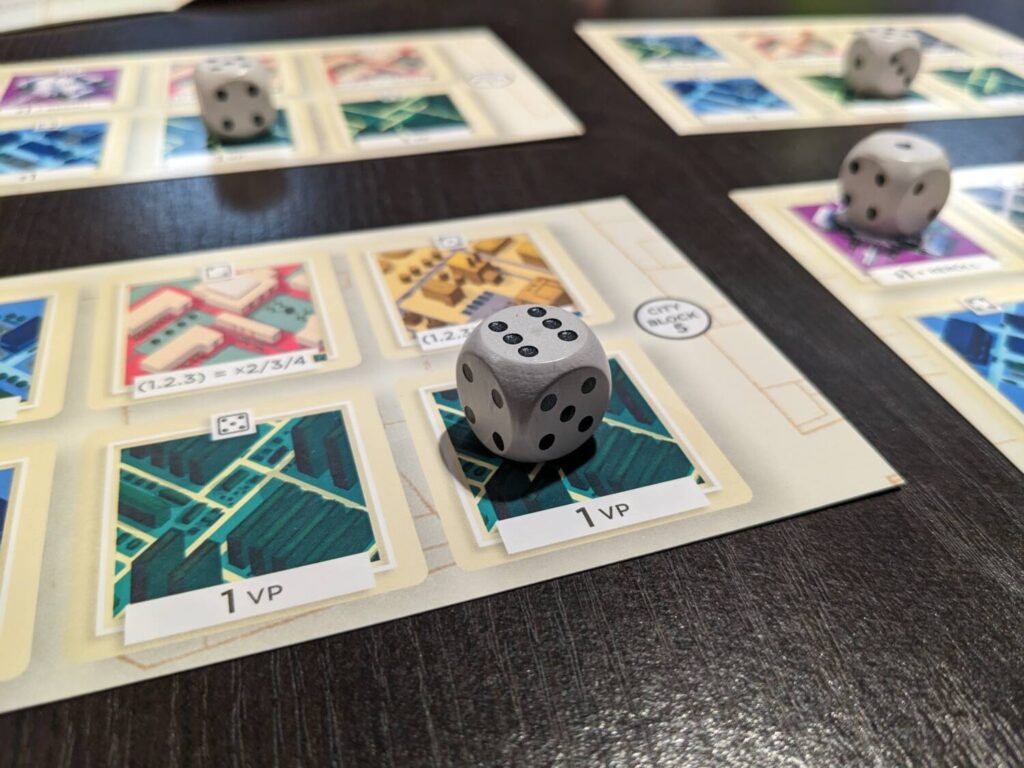
Summary
As travel games where you want to pass an hour or two, the first three games in the Nano9Games collection offer a nice diversion. None of the three games felt superlative. In fact, all the games seemed to aim for “so-so” and I thought all three products were fine.
I can get all three of the games’ cards into one box. Between the cards, instructions, and one set of dice and cubes, I can easily travel with all three games in a very compact way.
The Nano9Games feel like some of the games I’ve tried from Button Shy, or the new wallet series of games from Matagot. I don’t typically like the term “micro-game”, but Empire, Railways and City Planner fall squarely in the category of micro-games to me. I would be shocked to learn that anyone has played Empire 30 times. There’s just not enough guts to any of the three games here to warrant that.
But as a collection to stash behind the napkin holder on your kitchen table, to play in a small space while waiting for the casserole to finish up, the Nano9Games collection might work. The games are average, and in a pinch, they pass the time in a non-offensive way.


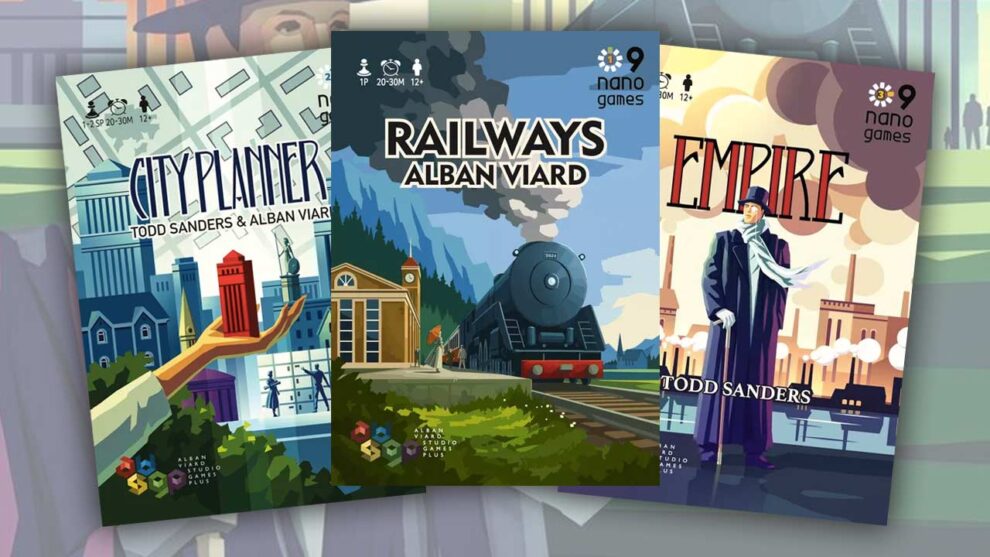


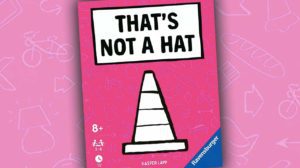





I like Mr. Viard. He produces some games from another individual I like, Todd Sanders. I tried Clinic — but it was at a level where nobody I knew would play it. I no longer own it. I had several of Todd Sanders’ designs. They were fun, solo games. I enjoyed them. But then there were issues with the card sizes in supplemental games and things were not, in my opinion, handled well.
I have the games in this set. I have tried them, and I think they are about as good as how you describe them. They have an interesting idea with these; nothing is executed in a way as to excite me enough to want to pull them out and play them. I have other games I would prefer to play.
Thanks for a great review.